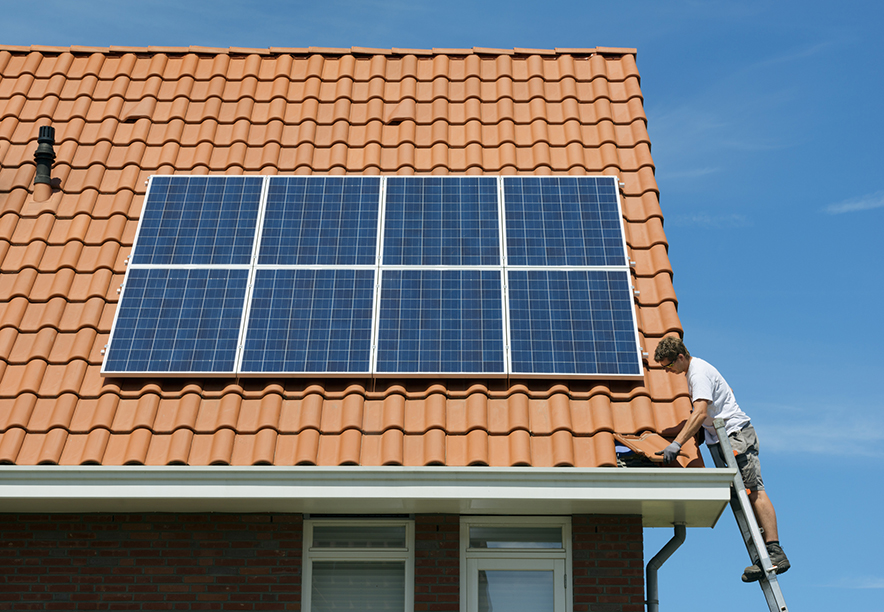Pool Solar Heaters: How to Heat Your Pool With Solar Panels
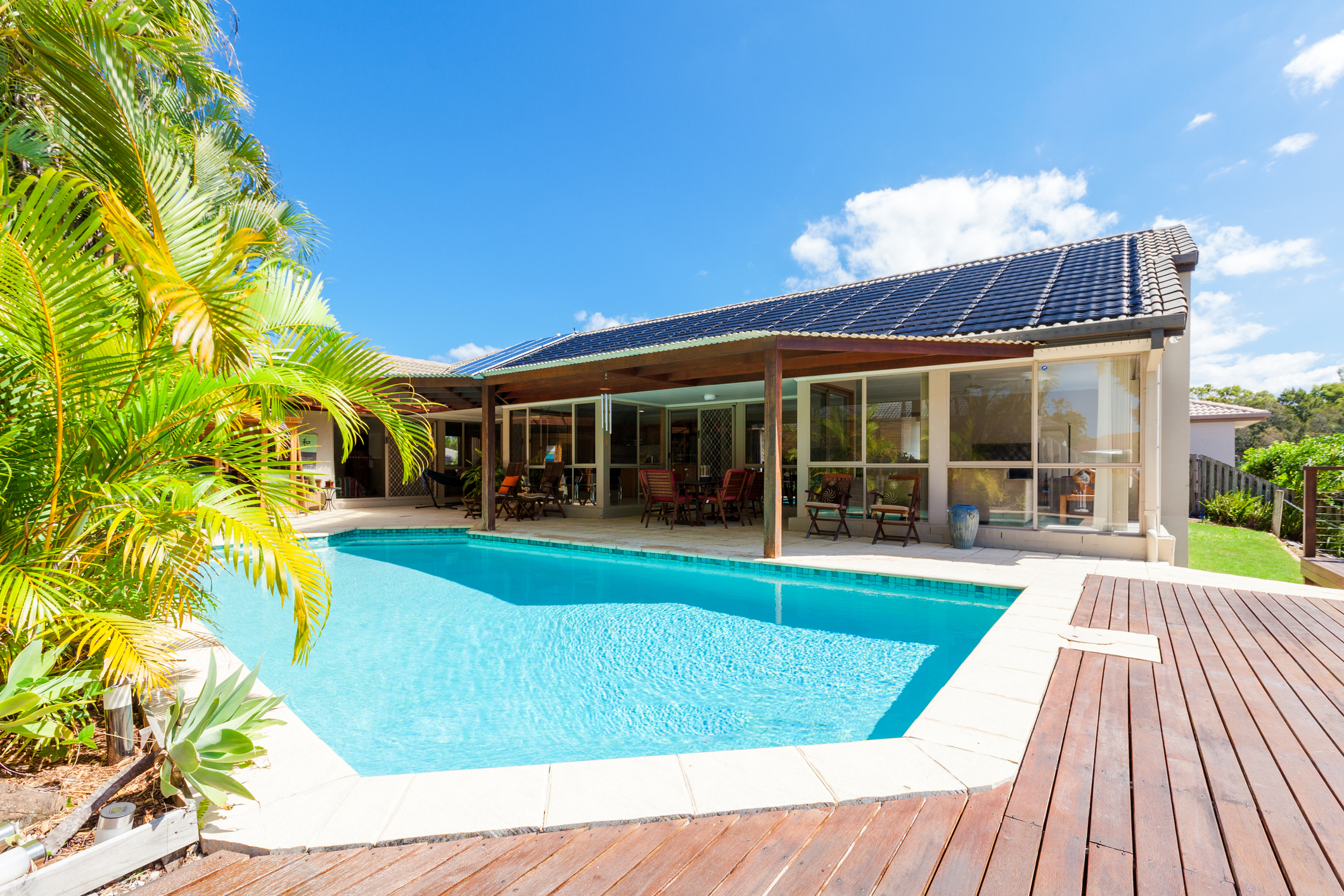
Each year, homeowners in the US spend anywhere from $1,200 to $5,000 on standard pool maintenance and that doesn’t even take into account utilities and repairs. When you consider utilities and possible repairs the investment in a pool can be as much as $5,000 annually.
Even with many homeowners stating the cost to maintain a pool is well worth it for them to enjoy the outdoors with their friends and family this can be a challenge in many household budgets.
As it isn’t practical to simply rip out your pool, what if there was a way to decrease one of the most expensive costs associated with a pool? Better yet, what if you could do it without harming the environment or drastically overhauling your property? Wouldn’t you want to learn more about it?
Heating pools is expensive. According to recent research, it costs U.S. consumers billions of dollars annually to heat the nation’s 5.7 million swimming pools. This means that for each homeowner, depending on geographic location, fuel source and type of heater a homeowner could be spending $175 to over $800 monthly simply to hear their pool! With the possible high monthly costs, many homeowners are turning to solar panels to help heat their pools, and reduce their maintenance bills.
Here’s what you need to know about heating a pool with solar power, and some things you should consider when deciding if solar power is right for you.
What are Solar Panels?
Simply put, solar panels are devices that convert sunlight into electricity. Solar panels are usually made out of a material called monocrystalline (crystalline silicon, in other words) and are typically about 5.5 feet by 3.25 feet and weigh anywhere from two to four pounds. They are often placed on a building's roof to capture sunlight and convert it into solar power. They do this through a collection of solar cells made of silicon, like mini semiconductors. Those cells use a positive and negative layer to create an electric field over the large, flat area of the solar panel.
When photons (those mysterious little science-things that make up light) hit a solar cell, their electrons come loose from their atoms. This forms an electrical circuit, which generates electricity. The more panels you use, the more energy you generate.
According to the Center for Climate and Energy Solutions(C2ES), solar generation makes up 3.3% of total U.S. generation in 2020 and is the fastest growing electricity source. What used to be a form of power reserved for the few, today solar panels now power entire homes across the world! The power they create can run air conditioners, hot water heaters, electrical appliances, and yes… heat up swimming pools.
And homeowners who use solar power stand to enjoy a host of outstanding benefits. Households that install rooftop solar panels could possibly stand to benefit in a host of different ways, and some potential examples of benefits from going solar include:
- Reduce pollution by 100 tons of CO2 in their lifetimes
- Increase the value of their properties
- Become eligible for tax breaks of up to 30% from the federal government
- Lower their monthly electric bills
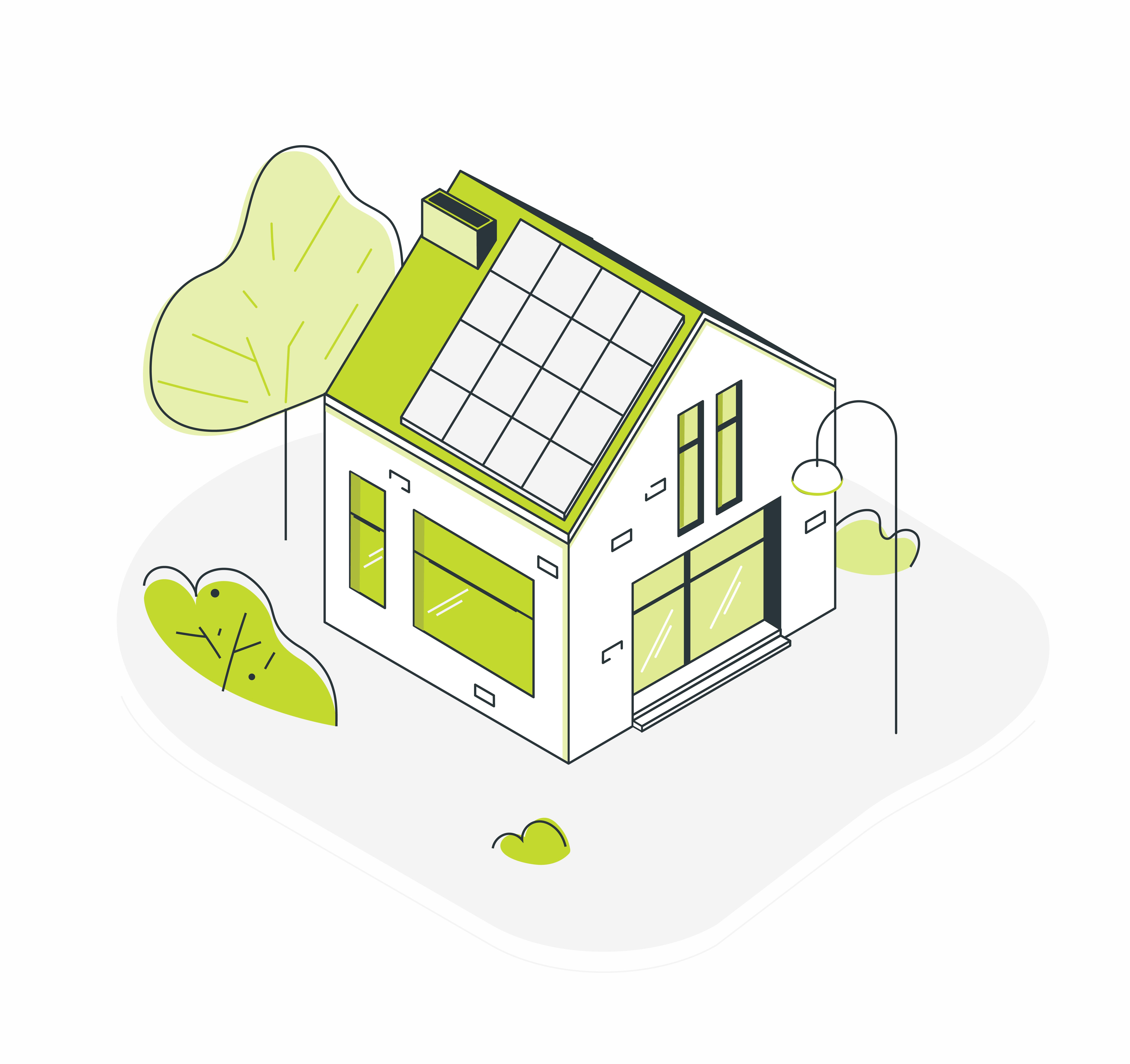
How Can You Use Solar Panels to Heat a Pool?
Surprisingly, heating your pool with solar panels is easier and more affordable than you might think. The installation can be done in as little as a week or two, so you can have your panels up and running in no time. Once the system is set up, it’s also completely automated, giving you peace of mind for years to come.
Most solar pool heating systems have a few different components. The components usually include a solar collector, filter, flow control valve, and pump. These components work together as one large integrated system that heats your pool water to the desired temperature.
Here’s how a solar pool heating system works:
- First, the water pumps through the filter.
- Then the water enters the solar collector, where it is heated and pumped back into the pool.
Solar Collectors
While there are many kinds of collectors, in-ground and above-ground pools in California use unglazed collectors. They’re called “unglazed” because they don’t have a glass covering (or “glazing”) to catch heat. Instead, they are made from industrial-grade rubber or plastic. Glazed panels are only used in colder climates, since they work to heat water in temperatures that fall below freezing. Alternatives to unglazed solar collectors include evacuated tube solar thermal systems, flat plate solar thermal systems, and thermodynamic panels. Each of these options is used throughout the U.S. and the U.K., and a qualified solar installer can help you decide which is right for you. (If you need help finding a professional solar installer in your area, Ygrene can easily help you find a local Ygrene authorized independent contractor close to your home).
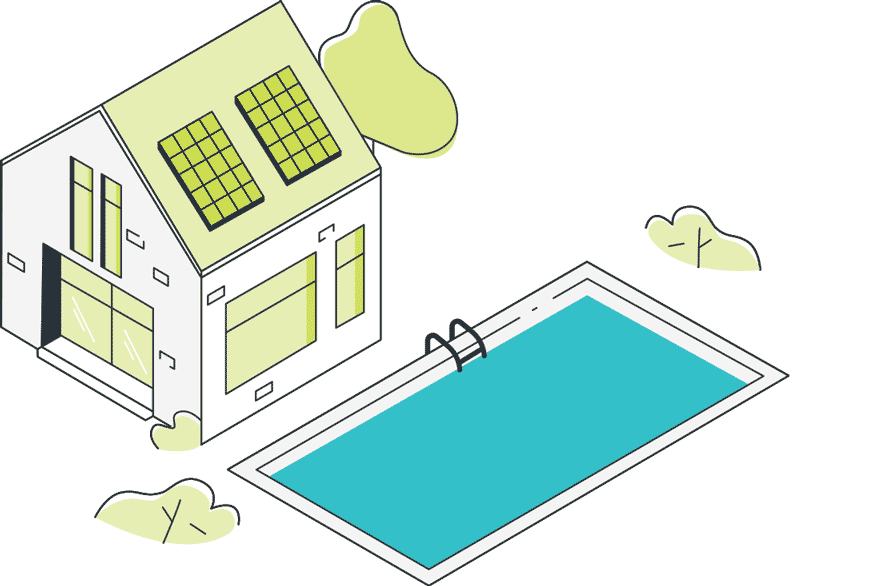
The Pros and Cons of Going with Solar Panels to Heat Your PoolAs with any sizable home upgrade, there are definite pros and cons of heating your pool with solar panels. But at the end of the day, it’s all about what is most important to you. So think about how these relate to your home, family, and pool usage. Then decide for yourself! Here’s a breakdown of both sides:
The Pros of Solar Pool Heating
The Cons of Solar Pool Heating
How Much Does it Cost to Heat Your Pool With Solar Panels?
This is a big question for anyone considering solar pool heating. After all if you are going to invest in a new way to heat your pool you want to make sure that you will realize actual savings.
As a general rule, you’ll pay more for your solar panels if you opt for glazed panels. If you live in California, though, glazed panels aren’t necessary, as they’re only required if you’re heating water in temperatures that fall below freezing.
Beyond this, the cost of solar pool heating systems vary widely, depending upon the size of your pool, your desired water temperature, overall exposure to the sun, shading, panel direction, climate, typical energy usage, and more.
The average installation cost of a solar pool heater is about $5,500, with costs ranging between $3,500 and $8,000. Once you’ve installed your solar panel system, you can start to think about savings. According to the US Department of Energy, the yearly cost to heat a 1,000 square-foot outdoor pool with an 80% efficient natural gas heater (at a cost of $0.80 per therm) is roughly $2,904.
At that rate, a solar heating system that you paid about $5,500 for could possibly pay for itself in less than two years. With consistent energy usage, you could potentially even save $308 in the second year! That’s assuming your system operates efficiently, which most do. Right now, an unglazed solar system can heat a pool to 78-85 degrees Fahrenheit without much effort.
Solar pool heating panels last about 20 years, so in that scenario you could be looking at about 17 years of cost savings. This could easily amount to thousands of dollars back in your pocket over the lifetime of your system.
How to Install Solar Panels to Heat Your Swimming Pool
If you’ve decided to purchase pool solar panels and you want to install them yourself, you’re in luck: solar panels are pretty simple to install, so this makes for a perfect weekend project.
However we completely understand if DIY isn't for you. So you could also find a solar contractor through Ygrene to install your solar system for you. This will save you a great deal of work and decision-making, and may even make the project go faster.
Initial Considerations
The first step is deciding where to install your panels. This depends, in large part, on how much space you have. When it comes to heating your pool, in-ground and roof-mounted systems will both work. It just depends on where you’re most willing to give up space.
You’ll also have to consider the collector orientation, which has a large impact on the panels’ efficiency. As a general rule, solar pool heaters (whether mounted on your roof or on the ground) should be oriented in a way that maximizes the amount of daily sunlight towards it. According to recent studies, a collector can face up to 45 degrees either east or west of true south, without creating notable negative impacts. Be aware, though, that local landscape features (such as hills, trees, and nearby buildings) and weather conditions may affect the appropriate orientation for the collector.
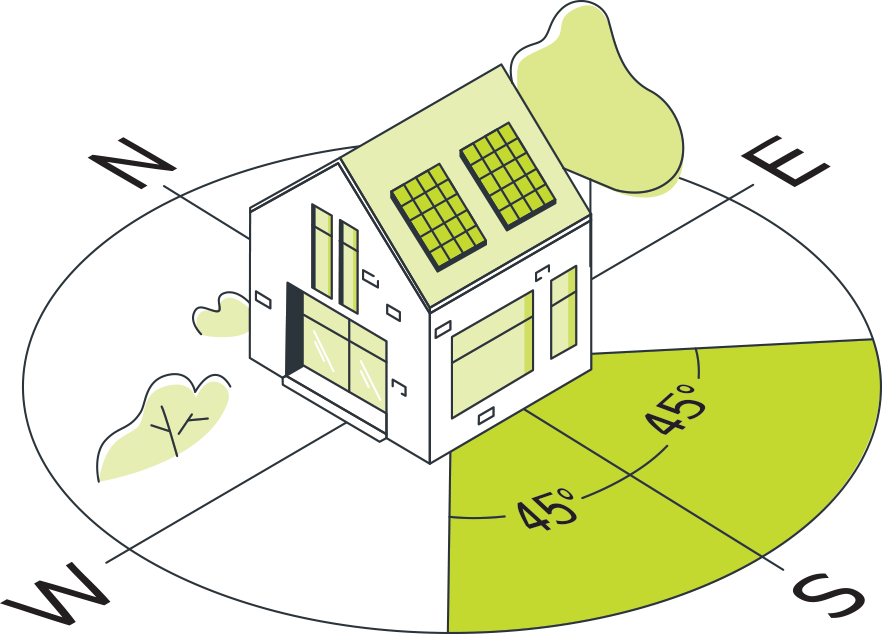
Then there’s collector tilt to think about (another big factor in determining your panels’ efficiency). The angle at which a solar panel should tilt depends largely on the length of your swimming season. Generally, summer-only heating systems should tilt at the same angle of your latitude, minus 10 to 15 degrees.Don’t worry, if all this talk about tilt and angles overwhelms you, a solar contractor can come to your home and help you determine the ideal tilt and orientation for your system.
Step-By-Step Installation Process
1. Consider Your Climate and Surroundings
If you live in a place where there’s a drastic temperature shift between night and day, you’ll have to think about how best to maximize your pool heating process. You should consider adding a pool blanket, to ensure that chilly nighttime temperatures don’t undo your daytime gains. This is especially true if you have an in-ground pool, as these will lose heat faster than above-ground pools.
Next, you’ll want to consider the space around your pool and the solar panels. Is there ample room for the solar panels to receive direct sun throughout most hours of the day? If there are high winds or severe weather patterns, will you have to remove the panels? These things are critical pre-considerations for anyone who wants to achieve a successful DIY solar panel installation project.
2. Install a 3-Way Pool Valve
This ensures that water can flow back to the panels or to the pool, if you choose to bypass the panel system. Be advised that proper three-way pool valves aren’t inexpensive, but they’re worth their weight in gold. Because they won’t ever block your return flow and because they can be adjusted to control your flow volumes, pool valves are a critical addition to any solar panel system.
3. Install a T-Pipe Fitting
This should go in near the 3-way valve in the same return line, placed on the poolside. This allows water that is returning from the panels to flow back into the return line below the valve. The water can then return from the panels back to the pool, heating the rest of the water and making for an enjoyable swimming experience.
4. Ensure Your Pipe Sizes Match
Throughout your solar panel installation, maintain a consistent pipe size for the pipes that run to and from your solar panel’s location. Generally, this is about 1.5 to 2 inches. If the panels are going in on your roof, you’ll need to install some plastic conduit pipe hangers; these will secure the pipe to the wall, preventing it from moving or shifting. If you’re using ground-mounted panels, union fittings will make it easier to remove your panels according to season. If you’re concerned about appearances, you can use rigid pool pipes, which will also create an interesting look.
5. Fasten the Panels to Your Roof
Once you’ve decided which panels you need, it’s time to attach them to your roof. As a general rule, this is the most challenging part of the installation process.
To begin, use stainless steel hanger bolts and drill them into the roof rafters. You want the hanger bolts to sit slightly wider than the width of the panels. Don’t forget to add a generous blob of roofing tar around the hanger bolts to seal out water and prevent leaks. Next, you’ll secure the panels using the strap or aluminum bar, which is designed to fit over the hanger bolts. Use washers and wing nuts to secure the panels in place.
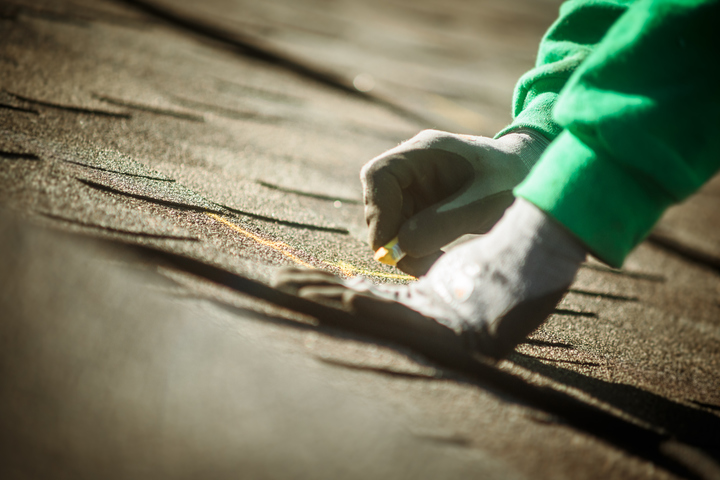
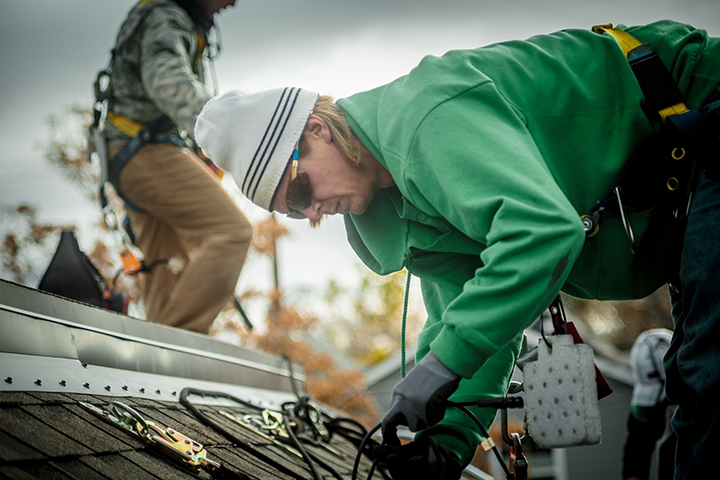
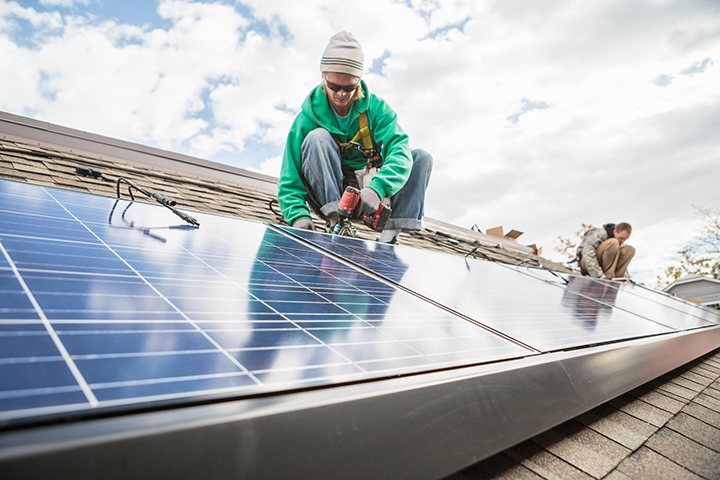
Be advised that depending on where you live, you may need to submit drawings, comply with codes, and obtain building permits before you start the installation process.
6. Connect the Solar Panels to Each Other
Finally, connect the solar panels to one another and to the union fittings. You’ll use PVC elbows and fittings, as well as the system’s hardware to do this. You’ll want to be particularly mindful of which end of the panel pipes flows in and which flows out, so the water flow direction will be correct. If you install this portion backward, you risk air building up in your system. If you’re installing panels on a slope, the output end of the panel will be higher.
Once you’ve completed this step, turn on the pump and open the valve to the panels. You’re all done! Depending on your pool system, you may have to shut off other power to the pool once the panels are set up, so make sure you double-check on this with your specific panel system before you begin panel installation.
Are Solar Pool Panels to Heat Your Pool Right for You?While there are many benefits to installing an efficient and advanced solar system, truthfully, only you can decide if solar pool heating panels are right for your needs. In addition to saving money, solar panel heating for your pool allows you to reduce your carbon footprint, and enjoy warm water (while still being eco-friendly) all year round.
Now, ready to get your solar panel project financed by Ygrene? Simply click below to get pre-approved within less than 30 minutes (with no credit check!)
Get Approved For Solar Panel Financing
Have more questions about solar panels for your pool? Give our team a call (or send us an email) today so we can answer all of your questions!-
-
Solar pool heat is affordable
While many people imagine solar pool heat will be expensive, depending on your energy usage, you could potentially get a solar heating system for much cheaper than you think. With growing popularity, the pricing of solar systems has decreased dramatically in recent years, so they’re now more affordable than they’ve ever been. Don’t be afraid to ask how much a solar system for your home could cost!
-
Solar pool heaters are easy to install
Unlike traditional pool heaters, which require the help of a plumber to install, solar pool heater installation can actually be a DIY project. This reduces the upfront cost and allows you to take control of your pool heating efforts. To install the panels, you’ll need some standard home handyman tools: an impact drill and several different bits, an assortment of hardware (the exact pieces you’ll need depend on the panels you’re installing), and some caulk. You’ll also need a few people (at least two or three) to help you lift, arrange, secure, and install the panels.
-
Solar pool heaters are easy to maintain
Unlike gas pool heaters, solar pool heaters can run for 10-20 years with few issues, as long as they are properly maintained. Routine maintenance tasks are simple and generally boil down to checking the pool’s chemical balance and filtering system and cleaning glazed collectors.
-
Solar pool heaters are eco-friendly
If you want to go green, this is a great way to do it. Natural gas and propane pool heaters both rely on fossil fuels to keep your pool temperature comfortable. Solar heat, on the other hand, is a clean energy source that produces no dangerous emissions. Who would have thought you could lower your carbon footprint just by going swimming?
-
Solar panels are more visible than other heating methods
Most solar products on the more affordable end of the spectrum will be highly visible. While some people don’t mind this (and many even like promoting their use of solar panels), others may be bothered by their display.
-
Solar panels require space
To access solar pool heat, you need a sizable area to install those solar panels. This means you’ll have to dedicate a portion of your roof, yard or patio your solar system
-
Solar panel output can vary
Unlike traditional heaters, solar panel output can be a bit unpredictable. While solar panels don’t need direct sunlight all the time to produce energy, they do rely on the sun’s rays, which means you’ll get a lower output level on cloudy or stormy days. Fortunately, those aren’t the best days for a swim, anyway!
-
-

